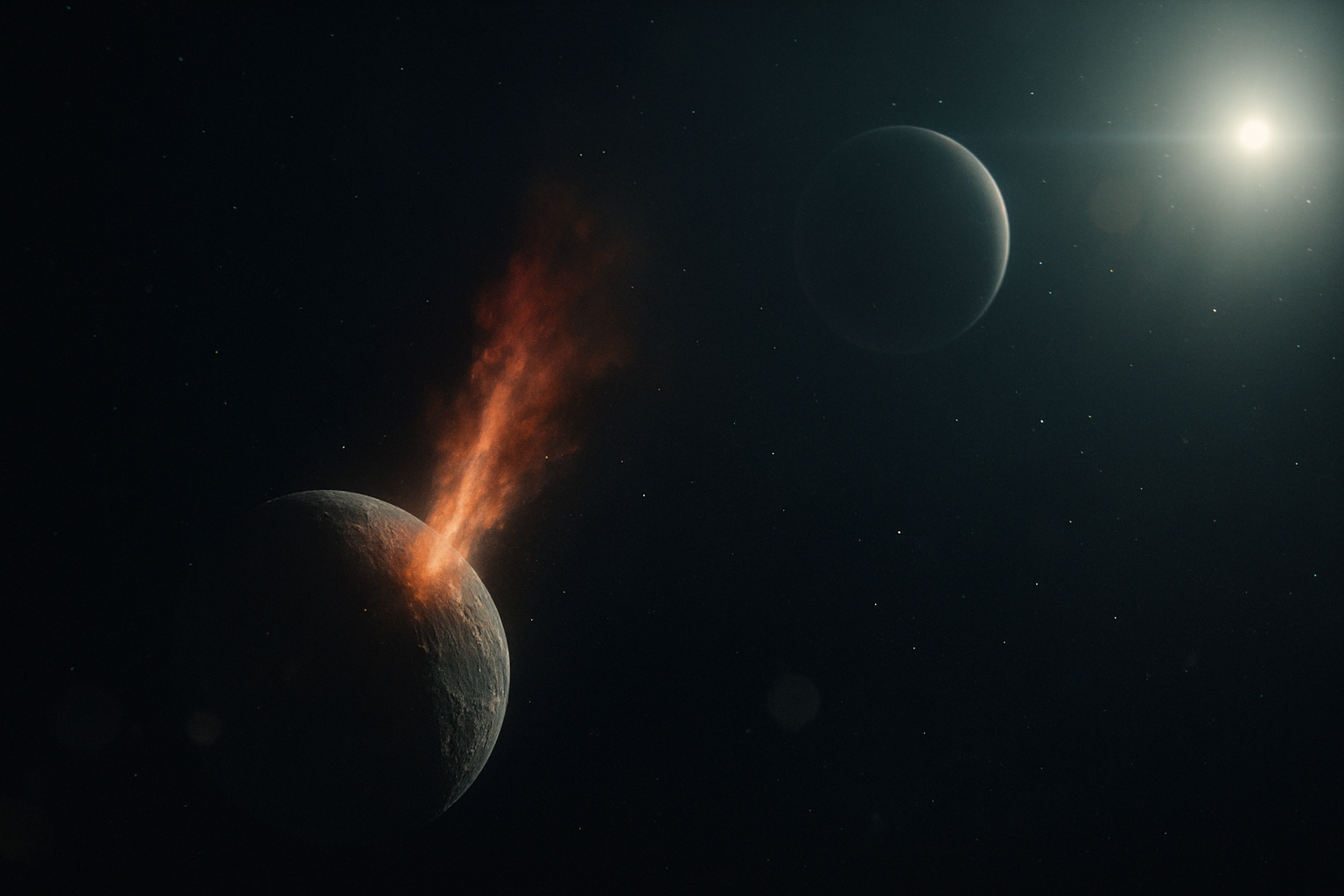Chapter Two: Foundryon Discovery Log – Chapter Two: The Forge Beneath the Spectrum
Artists depiction of the Aurigae-F System.
It did not begin with certainty. It began with a question—born from a signal too faint to trust, yet too persistent to ignore.
When the James Webb Space Telescope first surveyed the faint system now catalogued as Aurigae-F, its instruments recorded a spectral flicker not aligned with any known planetary orbit. Later cross-verification from the Very Large Telescope in Chile confirmed it: the source was not a planet, but a moon—a restless satellite now known as Erythra Ferris.
Volacanic Plumes
Ferris revealed itself through volcanic plumes bursting into space—an echo of Enceladus or Europa, yet chemically stranger. Spectroscopic readings hinted at iron oxides suspended in vapor, as though its subsurface ocean were infused with rusting metal. The analysis recalled the crimson stains of Mars’ iron-rich regolith, but Ferris’ emissions appeared dynamic, almost alive, rather than the still dust of a long-dead surface.
Early data inconsistencies were dismissed as noise—artifacts from Webb’s mid-infrared sensors—but repetition silenced the doubt. The plumes’ chemical pattern persisted across multiple observation windows, confirmed again by ESA’s ARIEL mission, still in calibration testing.
Ferris was active. It was not the echo of a world long gone, but the pulse of one still forming—or still forging.
And where there is a Moon, there must be a Parent.
The search widened. Ground-based spectrometers, from the Atacama Desert to La Palma, tuned their lenses toward the Aurigae-F system, tracing faint perturbations in starlight. What they uncovered became the next chapter of fascination: a massive planet orbiting within the system’s habitable zone—a world provisionally named Foundryon.
Foundryon’s atmospheric readings, though partial, have intrigued planetary scientists. Preliminary data shows a stable mixture of oxygen, carbon dioxide, and methane—a combination typically unstable without active chemical processes. The ratio itself resembles neither Earth’s nor Titan’s atmosphere, but something in between: oxygen-rich, yet threaded with organic volatiles.
Still, the analysis remains inconclusive. Interstellar distances distort precision, and early models admit a wide margin of error.
New Data
New data from the Deep Space Telescope Array in Chile, expected later this year, may refine these results—or overturn them entirely. Until then, Foundryon’s balance remains a mystery poised between the plausible and the extraordinary.
Yet one anomaly continues to elude explanation.
Recent spectrographic readings have detected atmospheric signatures that defy classification—resonant emissions that oscillate in narrow bands, neither chemical nor purely electromagnetic. Some analysts have compared the pattern to non-terrestrial aurorae, while others suggest an artificial or structured source. For now, they remain officially catalogued as “undecoded atmospheric harmonics.”
Whatever their origin, these signals mark the next threshold of curiosity.
Ferris gave us the scar—the trace of eruption and iron. Foundryon now gives us the echo—an atmosphere humming with riddles.
What began as a flicker of rust across a star’s spectrum is slowly revealing a world both familiar and impossible.
NASA/ESA Collaborative Notes [Updated 2043 Excerpt]
Solar system object: Aurigae-F System
Star: G-class, ~9.7 billion years old
Planet: Foundryon (Aurigae-F b)
Moon: Erythra Ferris (Aurigae-F b-1)
Distance from Earth: ~870 light-years
Key Observations:
Ferris: active geysers containing ferrum oxides, volatile hydrates, trace silicates
Foundryon: atmosphere with unstable oxygen-methane ratio
Anomalous spectral harmonics detected between 7.3–7.6 microns (unidentified origin)
Status: awaiting Deep Space Telescope confirmation (Chile Array 2044)
Seeker Interpretation [Foundryon Codex Fragment II]
“The first world spoke through vapor and ash.
The second sings through air that resists understanding.
Both whisper of a forge still burning beyond the veil of stars.”
